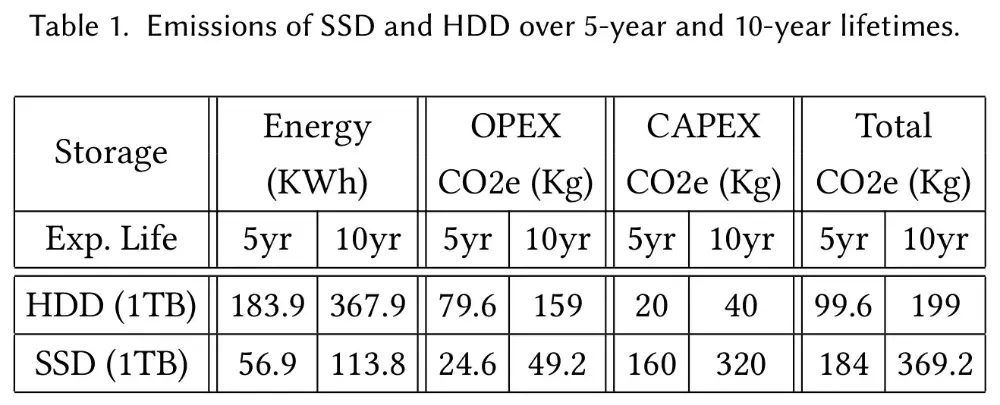Carbon Footprint of Storage – HDD vs. SSD
Overview Articles
What is the carbon footprint of SSDs really? by Arne Tarara
Methodology of the Cloud Carbon Footprint tool
HDD: Watt Hours / Terabyte: 0.65
SSD: Watt Hours / Terabyte: 1.2
Source: https://www.cloudcarbonfootprint.org/docs/methodology/#storage
HotCarbon 2022: The Dirty Secret of SSDs: Embodied Carbon
Tannu and Nair calculate that manufacturing a 1 terabyte SSD emits the equivalent of 320 kg of carbon dioxide. By comparison, a similar HDD emits just 40 kg.

Paper: https://hotcarbon.org/assets/2022/pdf/hotcarbon22-tannu.pdf
Video: https://youtu.be/-0tzoSEL8iA
ACM: https://dl.acm.org/doi/abs/10.1145/3630614.3630616
HotCarbon 2024: A Call for Research on Storage Emissions
@McAllister.etal.2024.CallResearchStorage
SSD rack vs. HDD rack:
- ~4× the operational emissions per TB
- ~10× the embodied emissions per TB

